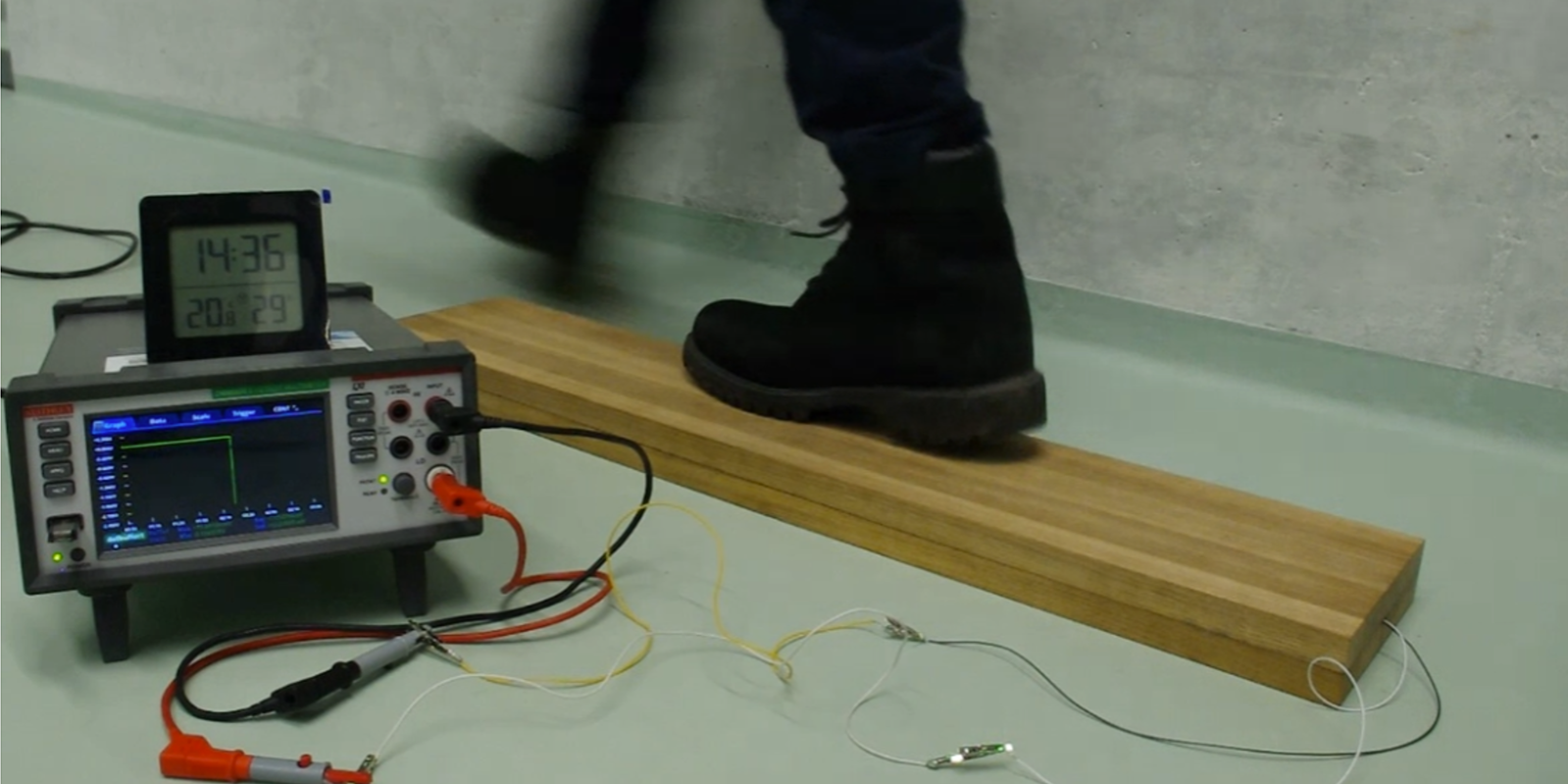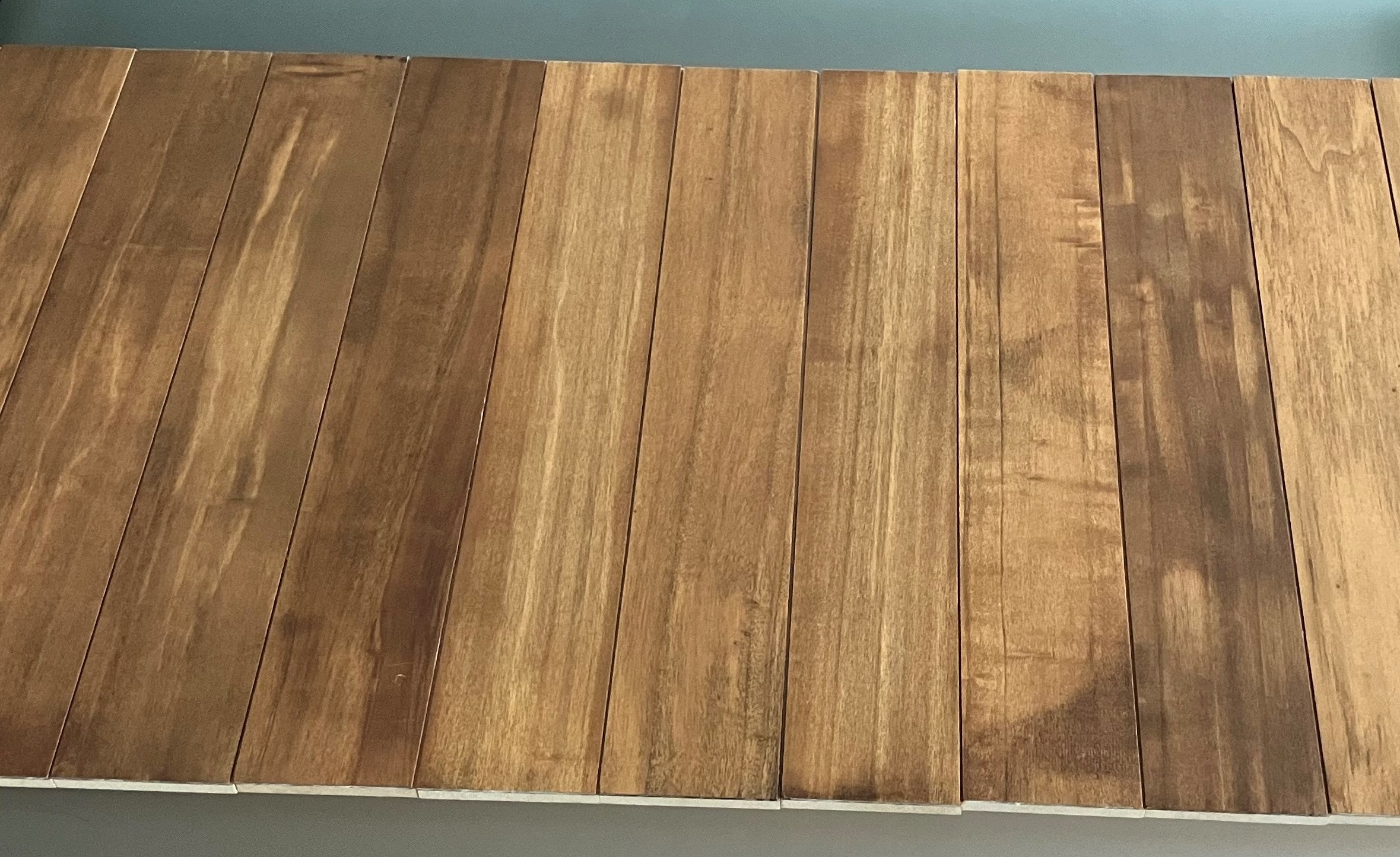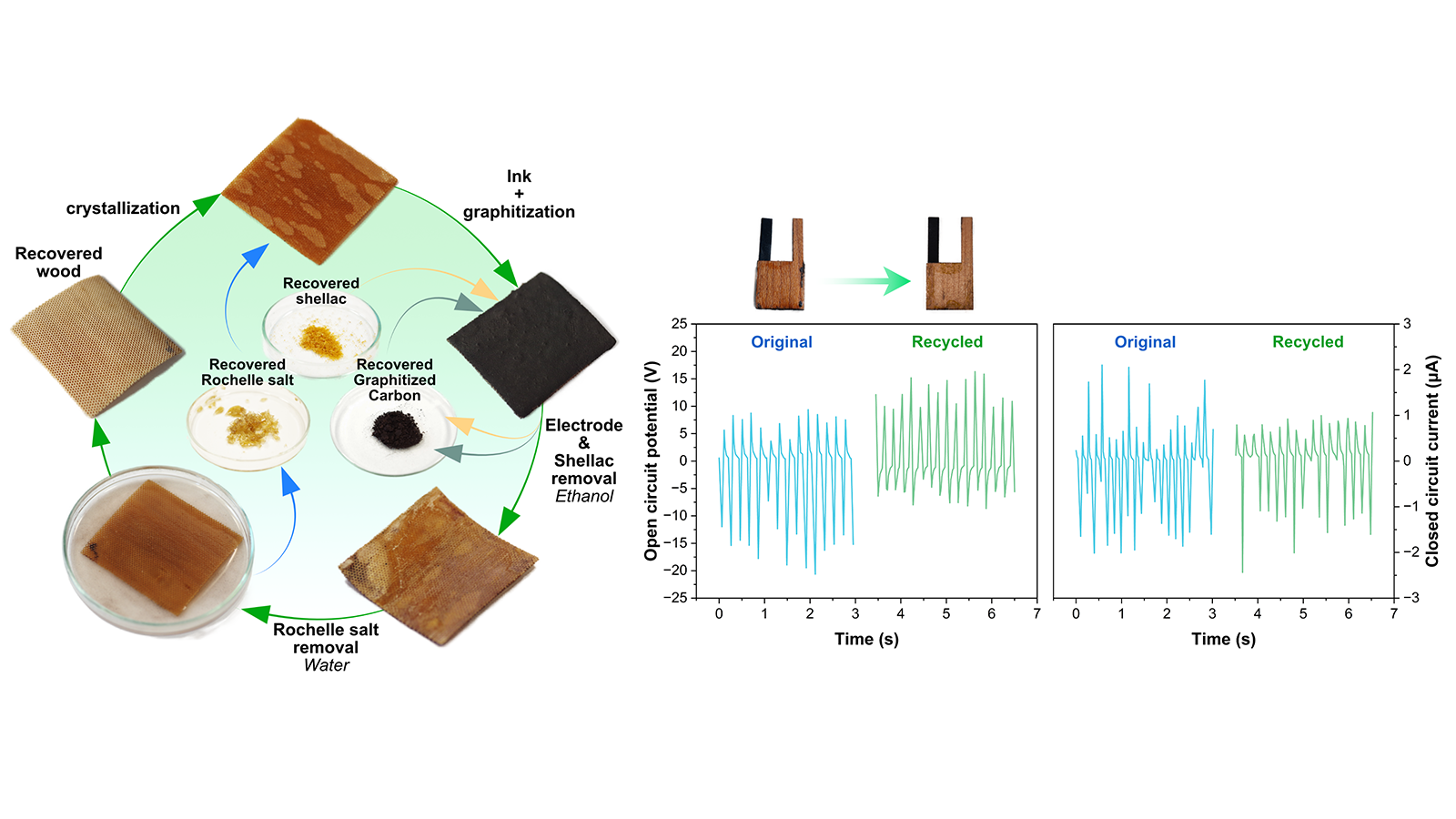Steps towards more sustainable and smart parquet flooring
What if wooden parquet floors were not only aesthetically pleasing, but also equipped with sensors in the future? In a project funded by Innosuisse, researchers at ETH Zurich and the Bauwerk Group demonstrated what modern and sustainable parquet floors could look like.

The Bauwerk Group has teamed up with the professorship of “Wood Materials Science” at ETH Zurich and Empa, led by Prof. Ingo Burgert, to investigate how sustainable parquet flooring of the future can not only conserve resources but also generate voltage as a bonus. The study focused on two main areas:
- Sustainable parquet product design despite resource constraints caused by climate change
- Sensor technology coupled with voltage generation through human movement
Oak is the preferred choice for parquet due to its hardness and appearance, but it is in limited supply. In addition, competition from cheap plastic wood imitations is increasing pressure on the market. How can these challenges be addressed sustainably?
The researchers looked for alternatives and opted for poplar wood, which has not been used much so far, but could attract more attention in the future, as poplar trees are quite resistant to climate change. Since poplar wood is softer than oak, it was modified and compacted using “green chemistry”. Lignin, a by-product of paper production, was used in the process. The result is impressive: a sustainable, durable parquet flooring with relevant properties comparable to oak.

In the second sub-project, the researchers investigated how parquet could be modified to generate voltage when people walk on it. When wood is subjected to mechanical stress, a small voltage is generated by the piezoelectric effect. In natural wood, however, the voltage is too low to be used. Hence, Rochelle salt, a by-product of wine making, has been embedded in the modified wood structure to increase the voltage. Rochelle salt crystals are known for their good piezoelectric properties, but their brittleness limits their use. By combining them with wood, a sustainable hybrid structure has been created that has a promising performance and is recyclable. In this combination, the researchers have shown that the modified parquet can be used as a sensor, as it generates voltage through the movement of people.


Possible applications for this piezo parquet flooring include smart home applications or, in the future, high-traffic locations such as airports or shopping centres. Also, the Tanzhaus Zurich has already expressed interest. The challenge now is to scale up production and industrial implementation.
Prof. Burgert emphasises the importance of industrial cooperation: “Every collaboration broadens our understanding of how we can address upscaling even better in the future.” He values the direct insight into the production and environment of the partners. “We aim to conduct fundamental research that can be implemented and lead to better, and above all, more sustainable, products and processes,” he summarises.
His team's 'piezo parquet' is one of five nominees for the HS Timber Group's “Evergreen Prize for Innovation” with the project title «LignoVolt», which will be awarded in Vienna at the end of May.
Links:
- Wood Materials Science Group, Professor Ingo Burgert
- external page Empa
- Related articles: Voltage from wood
Are you looking for research partners at ETH Zurich?
- Contact ETH Industry Relations